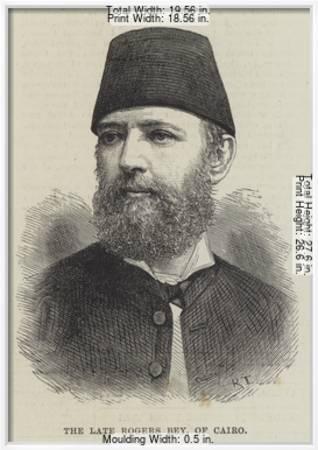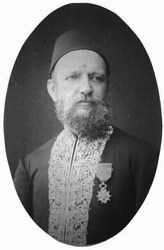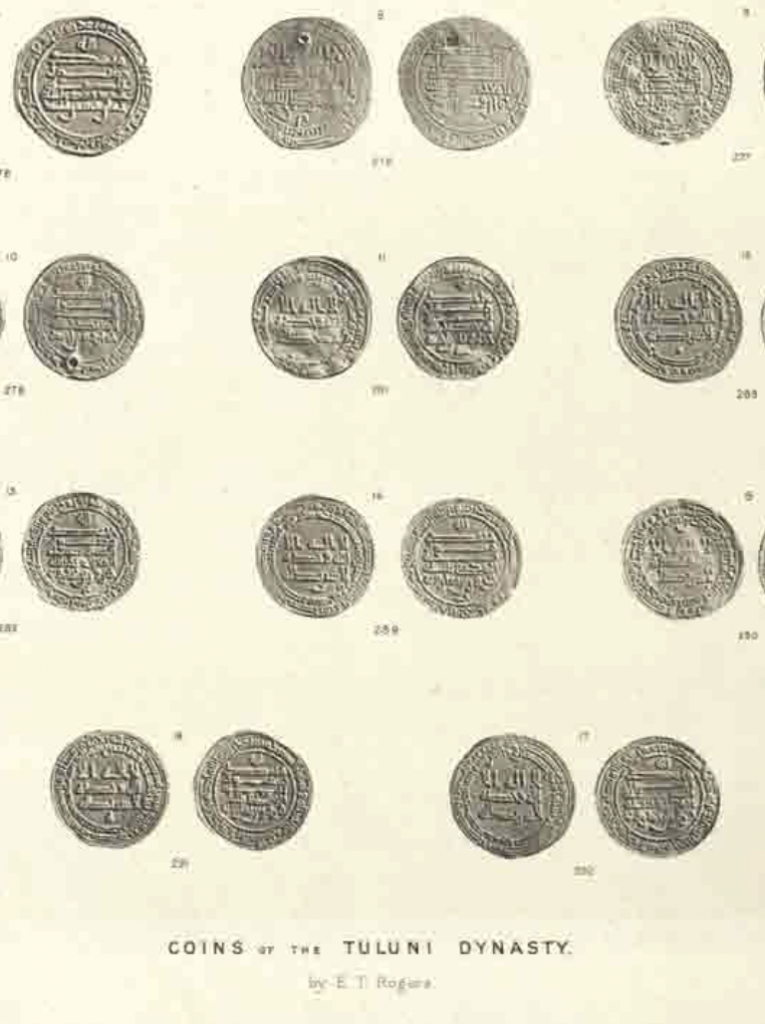Module: Edward Thomas Rogers
Edward Thomas Rogers (1830–1884) was a British diplomat and antiquities collector, who from 1848 served as consul in different countries of the Near East. After he participated in Lord Dufferin’s commission to Syria to investigate the causes of the 1860 civil war between Christians and Druze he was awarded the Ottoman honorary title of Bey. Rogers is especially known for having been a collector of antiquities, such as coins, pottery, sculptures, rings, bread stamps etc., which partly were donated to the British Museum. (see https://www.britishmuseum.org/collection/term/BIOG62835 under related objects) However, there is also indirect evidence linking him to the acquisition of manuscripts in the Qubbat al-Khazna (Damascus).



Objects collected by Rogers and preserved in the British Museum
The following pictures depict objects collected by Edward Thomas Rogers that are nowadays preserved in the British Museum. The selection was retrieved from London, British Museum, © The Trustees of the British Museum, license: CC BY-NC-SA 4.0, https://creativecommons.org/licenses/by-nc-sa/4.0/.
For a general account of his life, see the following webpage https://www.britishmuseum.org/collection/term/BIOG62835 and obituary:
Mr. E. T. Rogers, generally known of late years as Rogers Bey, first came prominently into notice as British Consul at Damascus, during the period of Lord Dufferin's mission to the East. Subsequently ho acted as British Consul at Cairo, and, on retiring from the English service, became the Khedive's representative in London; somewhat later, he was employed as Under Minister of Education, Inspector of Prisons, and Director of the Sale of State Lands, under the Egyptian Government. He died of dysentery, after a brief illness, on Tuesday, June 10, in the fifty-fourth year of his age. Mr. Rogers was a devoted student of Numismatics, and had formed a remarkably fine and complete collection of the Coins of the Khilafat, and of other Arabian Dynasties. It is to be hoped that this monument to his zeal and learning will not be rudely dispersed by a sale at auction. Mr. Rogers contributed to the Journal of this Society the following papers:
1. Notes on the Dinars of the Abbasside Dynasty, Vol. VII. n.s. p. 262.
2. Unpublished Glass Weights and Measures, Vol. X. n.s. p. 65.
3. Arabic Amulets and Mottoes, Vol. XL n.s. p. 122.
4. Dialects of Colloquial Arabic, ibid. p. 365.
To the Numismatic Chronicle :
1. Glass as a material for Standard Coin Weights, vol. xiii. n.s. p. 60.
2. Notes on some coins of the Dynasty of the Khalífahs of the Bani-Umeys, vol. xiv. n.s. p. 349.
He wrote also for the Bulletin of the Egyptian Institute, and for the Art Journal, a very interesting account of Cairo and its mosques. Only a few weeks before his death he presented to the Khedive a valuable report on the monuments of Cairo, which will, we hope, be published sooner or later. Indeed, of the Commission for the preservation of the Arab Monuments in Cairo, Mr. Rogers was the guiding mind. In the Academy of May 19, 1883, will be found an important letter from him, announcing his discover}' of the Mausoleum of the Abbasside Khalifs. Mr. Rogers was the first authority on all matters connected with Muhammadan Art in Egypt.
Journal of the Royal Asiatic Society, 1885, vol.15, no.3, pp.xxvi-xxvii
The death of Rogers Bey at Cairo on Tuesday deprives Egyptian society of one of its most distinguished members. We believe it was during the Lebanon mission that Lord Dufferin's appreciation of his remarkable linguistic powers and general ability secured Edward Thomas Rogers his first notable advance in the public service. He held successively the posts of British Consul at Damascus and Cairo, then became the Khedive's representative in London, and subsequently served as Under Minister of Education, Inspector of Prisons, and Director of the Sale of State Lands under the Egyptian Government. He was an accomplished Arabic scholar, spoke and wrote most languages of the Levant, and possessed profound knowledge of Oriental, especially Mohammedan, antiquities and coins, of which he leaves a magnificent collection. His principal publications were valuable monographs on Egyptian heraldry and Arabic coins, the catalogue of his own cabinet of coins in the Numismatic Chronicle, contributions to the Asiatic Journal and the Bulletin of the Egyptian Institute. He also wrote an interesting account of Cairo and its mosques in the Art Journal. He was the heart and soul of the Commission for the Preservation of Monuments in Cairo, of which he presented a report to the Khedive only three weeks ago. He was much esteemed by the late and the present Khedive, received the rank of Bey and the Order of Osmanieh, and was helpful to other scholars. Arabic antiquities, libraries, collections, and monuments will suffer greatly by his death.
The Athenaeum, 1884; N° 2955, p. 759
According to the biography and obituary was Rogers seen as what we would nowadays refer to as a Manuscript Hunter? Respond to the question by creating a student project as a new page describing your findings and linking to the relevant documents or passages. Optionally, you can tag relevant passages using Hypothes.is.
















